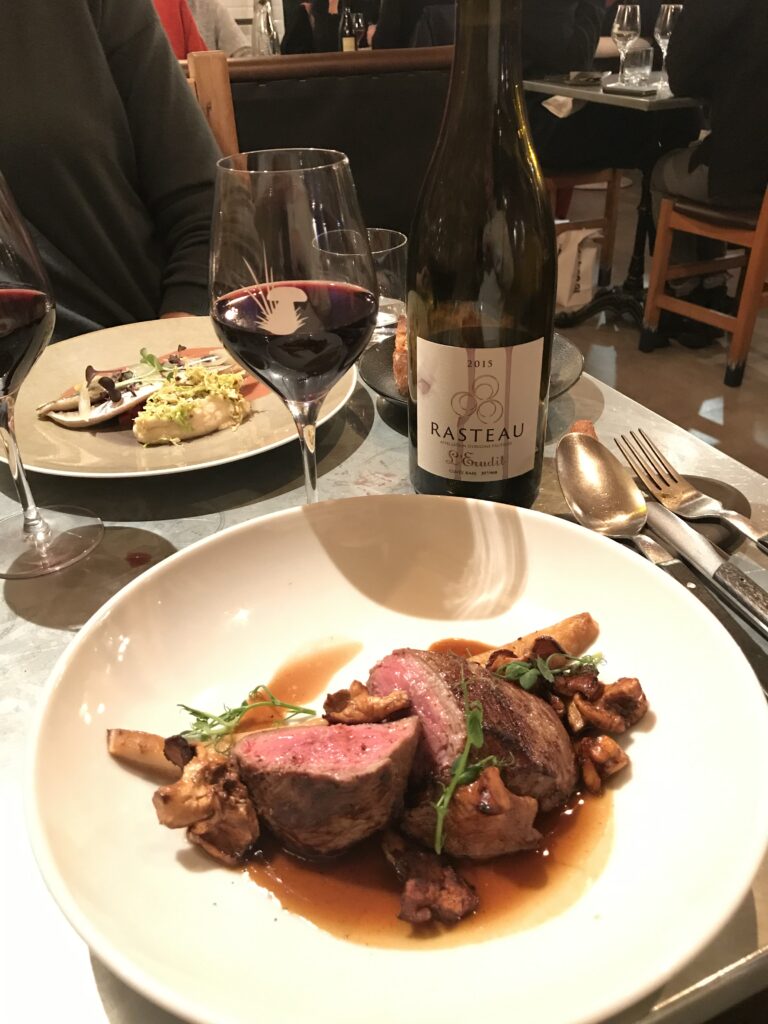
Wine and food pairing is one of those subjects that causes much confusion and angst. That’s probably because folks tend to think it’s too difficult or avoid the subject out of fear of making a “mistake.”
- The good news is that with a little care most pairings work just fine, with the wine and food peacefully coexisting. Some pairings are magical, where 1 + 1 = 3, but that’s unusual. And some pairings are train wrecks, where both the wine and food suffer, but with a little care those are easy to avoid.
- If you enjoy a particular pairing, even if a bit unconventional, don’t let anyone tell you you’re wrong. Everyone perceives wine and food differently, so if you like something that others dislike, that’s OK. Trust your own palate. Not convinced? Look at several professional wine tasting notes for the same wine and you’ll find that each describes the wine in a different, and often contrary, manner.
- Many wines require a food partner to shine. Drinking a high tannin, high alcohol red wine as an aperitif? Not so good. Pair it with a fat, juicy, steak? Both the wine and the food benefit.
Rules? We don’t need no stinkin rules! Most of the common pairing “rules” were concocted centuries ago when food was simple and straightforward. Today, there’s more of a melding of food cultures, and the old “red with meat, white with fish” or what “grows together goes together” don’t always cut the mustard. Or the miso. But a couple of general rules still apply:
- There can only be one star of the show. If you’re serving Château Magnifique, make sure that the food is simple and allows the wine to shine. And if you’re having a special dish, pick a wine that complements it but stays in the background.
- Pair to the predominant character of the dish. Sometimes that’s the main ingredient, such as beef or a strong fish. But often it’s the sauce, condiments, or sides that give the dish its character. So, a chicken dish with a tomato sauce will go just fine with an acidic red wine.
- Body matters. A full-bodied wine will overwhelm a light fish dish, just as grilled beef can obliterate a delicate red.
One key to pairing is the wine’s acid level. (We’ll explore some other keys in our next post). Higher acid wines tend to be more food friendly. To understand acid, think about the refreshing tartness of lemon juice that causes a slight prickly sensation along the side of your tongue. Acidic wines tend to highlight the essence of the food and balance out some undesirable components. For example, acid will moderate fatty, oily, salty, or mildly spicy dishes.
- Some good candidates for a high acid wine: dishes with cream and butter sauces; oily fish; and fried foods. Sparkling wines are typically high acid and can be fun.
- High acid wines are great with salads with vinaigrette and dishes with sharp ingredients, like tomatoes.
- Make sure that the wine is more acidic (tart) that the dish, otherwise the wine will seem dull and flabby.
- Some high acid whites: Sauvignon Blanc and Riesling. High acid reds: Pinot Noir and Sangiovese.
On to the lab session. We made a pork piccata with lemon (acid), capers (salt), and butter. The pork by itself is fairly neutral, so the sauce is what drives this dish. We paired it with a 2020 Trimbach Alsatian Riesling. This is a dry, high acid white wine with citrus notes that we figured would pair well with the acidity, salt, and butter in the dish.
- The verdict: this was a pleasant match. Not an “aha” pairing by any means, but very enjoyable.
- The point of it all: try experimenting with different pairs and find what you like and dislike. You’ll discover some new “go to” pairs.
Next time we’ll explore some other pairing principles.
Cheers!
